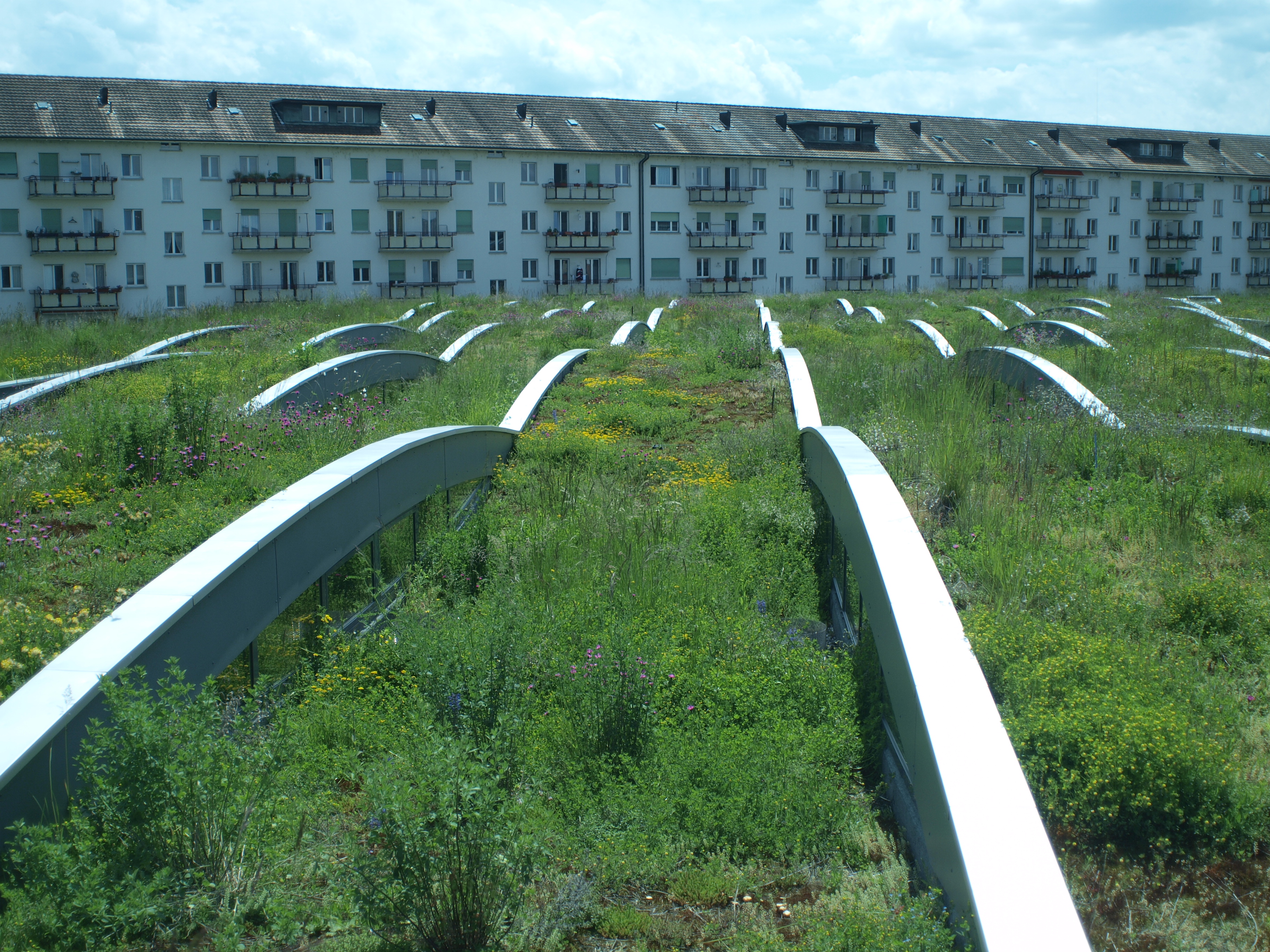In many cities in Switzerland, numerous green roofs were created in the 1980s, mainly as pilot projects, which provided a foundation of knowledge and experience for later initiatives. In addition, 1995 was the EU year of Nature Conservation. This provided the impetus for Basel’s first green roof campaign, which started in 1996. In the early 1990’s the City of Basel implemented a law to support energy saving measures. According to this law, which was the only one of its type in Switzerland, 5% of all customers’ energy bills are put into an Energy Saving Fund, which is then used to fund energy saving campaigns and measures. The national Department of Environment and Energy decided to pursue and promote green roofs using this source of funds for the 1996-1997 program. A second funding program was implemented in 2005-2007.
No further funding initiative was deemed necessary after that. The campaign was considered successful enough, and the obligation to convert into green roof all flat roofs in new and retrofitted building that went into force in 2010 (reinforcing the 2002 one), was deemed sufficient to provide the momentum needed to the expansion of green roofs in the municipality.
In densely built-up areas where providing extensive parks and planting trees may be impossible, vegetated roofs are a feasible greening option. These roofs not only mitigate the urban heat island effect but also act as insulators. By minimising heat gains in buildings, green roofs can lower the indoor temperatures by as much as 5°C and consequently reduce the need for cooling and the associated energy use, thus contributing to climate change mitigation and adaptation. Modelling studies conducted in Manchester, UK show that greening all the suitable roofs in densely built-up areas could reduce storm water runoff by 17–20% (Speak et al., 2013). Green roofs can also provide ‘steppingstones’ for migratory species under changing climate conditions.
An investigation of the total number of green roofs in 2006 indicated the presence of 1,711 extensive green roofs (roofs with shallow soil that mostly house succulents and grasses) and 218 intensive green roofs (roofs with deeper soil to accommodate larger plants and trees) in the city of Basel. So, approximately 23% of Basel’s flat roof area was green in 2006. Since then, around 100 green roofs, covering a surface of 80,000 m2, have been installed each year. Although there is no new official estimate available, this should add up to about 40% of roof surface in Basel now covered by green roofs, according to the Basel municipality.
For developers, installing green roofs is now considered routine, and developers make no objections to installing them. In Basel, the green roof regulations (i.e. the 2002 amendment to the City of Basel’s Building and Construction Law), stipulate the following:
- The growing medium should be native regional soils — the regulation recommends consulting a horticulturalist;
- The growing medium should be at least 10 cm deep;
- Mounds 30 cm high and 3 m wide should be provided as habitat for invertebrates;
- Vegetation should be a mix of native plant species, characteristic to Basel;
- Green roofs on flat roofs over 1,000 m2 must involve consultation with the city’s green roof expert during design and construction.
A further amendment in 2015 set the minimum thickness of soil to 12 cm.



